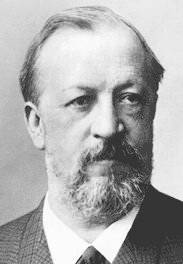
FAQ About Nikolaus Otto

Who was Nikolaus Otto?
Nikolaus Otto was a German engineer who is best known for inventing the first successful internal combustion engine. Born on June 14, 1832, in Holzhausen an der Haide, Germany, Otto's work in the field of engine technology laid the groundwork for the development of the modern automobile engine.

What was Nikolaus Otto's most significant invention?
Nikolaus Otto's most significant invention was the four-stroke internal combustion engine, also known as the Otto cycle engine. This engine became the foundation for most modern gasoline engines used in vehicles and machinery today. It operates on a cycle that includes intake, compression, power, and exhaust strokes.

How did Nikolaus Otto's invention impact automotive technology?
Nikolaus Otto's invention of the four-stroke engine revolutionized automotive technology by providing a more efficient and powerful means of propulsion than previous steam engines. This breakthrough facilitated the mass production and widespread adoption of automobiles and has influenced the design of engines for over a century.

When did Nikolaus Otto invent the internal combustion engine?
Nikolaus Otto developed his first successful internal combustion engine in 1867. This engine was a prototype that led to further refinements and eventually resulted in the creation of the four-stroke engine, which he patented in 1876.

What is the Otto cycle?
The Otto cycle is the fundamental operating cycle of a four-stroke internal combustion engine. It comprises four stages: intake, compression, power (combustion), and exhaust. This cycle improves efficiency and power output, making it a crucial technology for modern vehicles.

Did Nikolaus Otto work alone on his inventions?
While Nikolaus Otto was the key figure in the development of the internal combustion engine, he worked with several collaborators, including Eugen Langen and Franz Rings. Together, they helped refine the design and functionalities of the engine.

How did the Otto engine differ from steam engines of the time?
The Otto engine differed from steam engines primarily in efficiency and method of operation. Steam engines generate power by heating water to create steam, which then drives pistons. In contrast, the Otto engine uses the combustion of fuel within the engine itself, which is more efficient, provides greater power output, and allows for more compact designs suitable for vehicles.

What were some challenges Nikolaus Otto faced with his invention?
Some challenges Nikolaus Otto faced included technical difficulties in designing a practical and efficient engine, competition from steam engines, and legal issues related to patents. Overcoming these challenges required innovation, perseverance, and collaboration with skilled engineers and financiers.

What industries benefited from Nikolaus Otto's engine technology?
Numerous industries benefited from Nikolaus Otto's engine technology, including automotive, agriculture, manufacturing, and transportation. The versatility and efficiency of the Otto engine made it suitable for powering vehicles, machinery, and equipment across various sectors.

Where did Nikolaus Otto conduct his engine experiments?
Nikolaus Otto conducted many of his engine experiments in Cologne, Germany, where he and his partners set up workshops and factories. This location became a hub for their innovative work on the internal combustion engine.

What were the main components of the Otto engine?
The main components of the Otto engine included the cylinder, piston, crankshaft, camshaft, and the spark ignition system. These components work together in synchrony to convert fuel into mechanical energy through the four-stroke combustion process.

Was Nikolaus Otto's engine successful commercially?
Yes, Nikolaus Otto's engine was commercially successful. His four-stroke engine design became widely adopted in the automotive industry and beyond, forming the basis for engine designs used around the world. Its commercial success was pivotal in establishing the modern engine manufacturing industry.

What innovations did Nikolaus Otto introduce with his engine?
Nikolaus Otto introduced innovations such as the use of a four-stroke cycle and a compression ignition process in internal combustion engines. These innovations significantly enhanced engine efficiency and power, influencing future advancements in engine technology.

Did Nikolaus Otto receive any awards for his contributions?
While specific awards recognizing Nikolaus Otto's contributions during his lifetime are not well-documented, his influence and innovations have been widely acknowledged in the engineering community. He is often credited as a pioneer of internal combustion engine technology.

What was Nikolaus Otto's early life like?
Nikolaus Otto was born in a small village in Germany and initially worked as a traveling salesman. Despite lacking formal engineering education, his curiosity about engines sparked a career that led to his groundbreaking inventions. His early life was marked by a keen interest in machinery and innovation.

How is Nikolaus Otto remembered today?
Nikolaus Otto is remembered today as a key figure in the development of the internal combustion engine, which revolutionized transportation and industrial machinery. His legacy lives on in the countless engines that operate based on the Otto cycle, making his contributions foundational to modern engineering.

Did Nikolaus Otto hold any patents?
Yes, Nikolaus Otto held several patents for his engine designs, most notably for the four-stroke internal combustion engine. His patents played a crucial role in securing his innovations against competitors and establishing his reputation as a leading inventor in engine technology.

What is the historical significance of the Otto engine?
The historical significance of the Otto engine lies in its transformation of the transportation industry and its role as a precursor to modern engine design. It marked a shift from steam power to internal combustion, setting the stage for the development of automobiles, airplanes, and other machinery.

Who did Nikolaus Otto collaborate with on his engine?
Nikolaus Otto collaborated with engineers such as Eugen Langen and Franz Rings. Their partnerships were vital in refining the engine design and overcoming technical challenges, leading to the successful implementation and commercialization of Otto's engine technology.

What legacy did Nikolaus Otto leave in automotive engineering?
The legacy Nikolaus Otto left in automotive engineering is profound. His development of the four-stroke internal combustion engine established a blueprint for future engine technology, paving the way for modern vehicles. Otto's principles continue to influence engine design and innovation across the globe.
